
Which Eucalyptus to plant according to your region?
Varieties suited to your soil and climate
Contents
TheEucalyptus or gum tree, known for its fragrance, is an elegant exotic tree, appreciated for the beauty of its evergreen blue-green to grey-silver foliage. Eucalyptus are captivating and offer delightful surprises throughout the year, such as colourful bark that peels in strips or flowering in lovely pom-poms of white stamens.
Native to Australia, but with variable hardiness, eucalyptus is not limited to the climates of the Atlantic or Mediterranean coasts. It adapts well in well-drained soil in areas where winters are harsher. On a balcony, it can be grown in a pot, simply bringing it indoors to a conservatory during colder months.
Discover our selection of Eucalyptus suitable for southern, oceanic, and even montane climates.
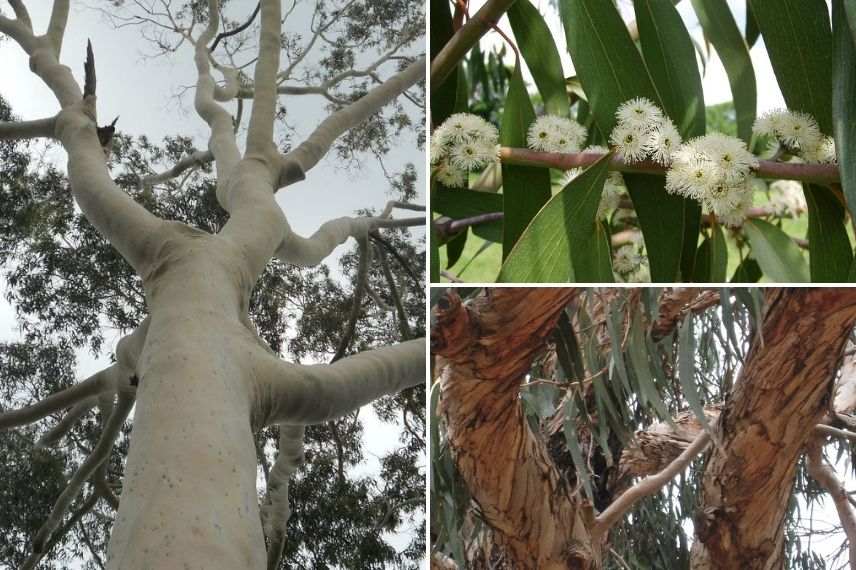
Eucalyptus is a highly decorative tree in every season
⇒ To avoid any failures, we recommend planting appropriately. Don’t hesitate to adopt our web application Plantfit.
You live in the Mediterranean region.
The Eucalyptus ‘Baby Blue’ is a pyramidal bush that retains its juvenile round or ovate foliage for a long time. Its leaves are silver-blue, and its grey-white bark exfoliates to reveal a smooth surface. It requires a warm, sunny exposure and well-drained, lime-free soil. Its cold resistance is limited to short frosts at night of around -10°C. It withstands the summer drought of the Mediterranean climate.
The Eucalyptus gunnii ‘France Bleu’ is a moderately hardy bush that is easy to maintain. Its highly ramified appearance and very fine blue-tinged foliage are elegant at all stages of its growth. It can be pruned very short to remain compact. The ideal climate for this small tree is that of the seaside or the southern regions where the cold is mild and of short duration.
Elsewhere, it is an Eucalyptus to be grown in a pot on a terrace or balcony. This dwarf Eucalyptus, suitable for pot cultivation and not exceeding 3m in height, should be stored in a cool, bright room during winter.
 The Eucalyptus ‘France Bleu’ on the left and the Eucalyptus ‘Baby Blue’ are suitable for the Mediterranean climate.
The Eucalyptus ‘France Bleu’ on the left and the Eucalyptus ‘Baby Blue’ are suitable for the Mediterranean climate.
Read also
Eucalyptus: planting, pruning and careYou live in the south-west basin.
The Eucalyptus gunnii, native to Tasmania, is a tree with a broad columnar habit, decorative bark, and evergreen blue-grey foliage that is highly aromatic. It can reach 20 m in height in our gardens. Its beautiful smooth, pale green bark exfoliates with age to reveal a new, yellow-green bark that can sometimes be grey, tinged with pink. Flowers are rare in our climates. This Eucalyptus, or Cider Gum, prefers cool, deep soils. Its roots are less powerful than those of other eucalyptus, allowing it to be planted closer to buildings.

The Eucalyptus gunnii has peeling bark
⇒ Eric’s advice: Mountain trees rather than undergrowth, it is worth noting that the more exposed and challenging the location, the more beautiful the Eucalyptus will be. Many Eucalyptus are not meant to have a straight trunk; they tend to lean or form multiple trunks naturally. Plant them on a hillside in groups of 3 to 5, as close planting limits their height growth and creates a very interesting picturesque effect overall.

The eucalyptus gunnii naturally regrows after a weather-related fire
Discover other Eucalyptus
View all →Available in 1 sizes
Available in 1 sizes
Available in 1 sizes
Available in 1 sizes
Available in 1 sizes
Available in 1 sizes
Available in 1 sizes
Available in 1 sizes
Available in 1 sizes
Available in 2 sizes
You live on the Atlantic fringe.
Eucalyptus gunnii prefer rich, cool soils, even calcareous, and full sun exposure, although they can tolerate partial shade at their base. Due to their shallow root system and the mass of their foliage in winter, they are vulnerable in waterlogged soil after heavy rains. Therefore, it is advisable to plant Eucalyptus when they are still small and in their final location to allow them time to establish themselves sustainably. In areas with an oceanic climate, the presence of Trachycarpus fortunei, which has similar needs to Eucalyptus gunnii, will be a good indicator of success.
Eucalyptus gunnii ‘Azura’ is a new variety of cider gum that is interesting for its excellent hardiness, moderate growth, superb columnar and dense habit, as well as its extremely bright grey-blue foliage. Easy to maintain, it adapts to all well-drained soils that are not too calcareous. However, it requires full sun to thrive.
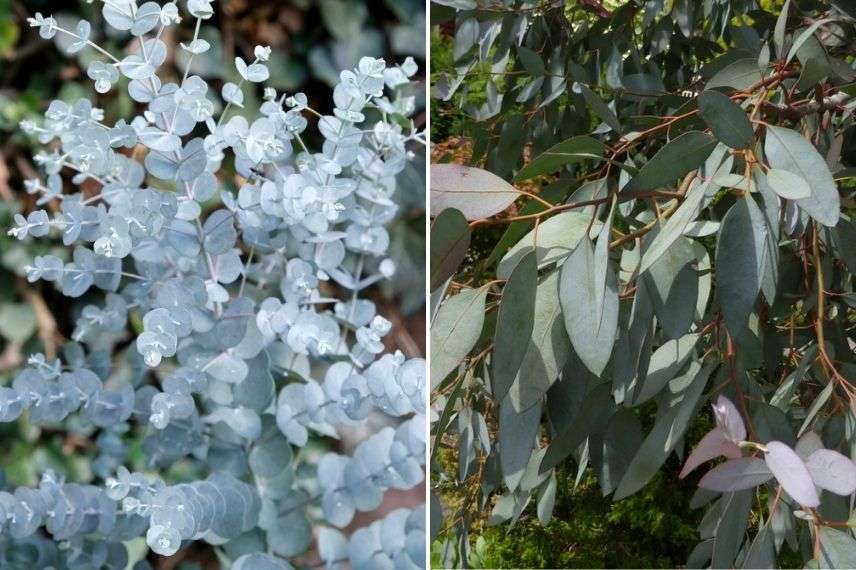
Young and mature foliage of Eucalyptus gunnii ‘Azura’
Eucalyptus Silverana is a selection of a conical tree that has numerous branches from the base of the trunk. At maturity, this small tree reaches about 10m in height and 4m in spread if not pruned. Eucalyptus ‘Silverana’ has grey-blue, silver, evergreen, and aromatic foliage in winter. Its bark peels away to reveal a yellow to rosy bark. The juvenile foliage consists of rounded or heart-shaped leaves, while the adult leaves are elongated and lance-shaped. The flowering in August-September features fragrant flowers shaped like tiny pinkish-white pom-poms, which are highly attractive to insects. This species can withstand moderate winds but does not tolerate salt from sea spray.
You live in a semi-mountainous region with a continental climate.
L‘Eucalyptus parviflora (syn. parvula) or Small-leaved Gum is a hardy species, slightly tolerant of limestone and drought-resistant. This small evergreen Eucalyptus with a twisted habit has trailing branches. It is robust and attractive all year round. Its evergreen, sickle-shaped leaves are a beautiful olive green. It flowers from August until frost, producing small cream-white pom-poms.
 Eucalyptus parviflora tolerant of limestone
Eucalyptus parviflora tolerant of limestone
L‘Eucalyptus niphophila is native to the Australian Alps. It is the most snow and cold wind-resistant eucalyptus. It prefers a slightly alkaline, poor, well-draining, and rather cool soil. This tree can cope with summer drought. Also known as Snow Gum, this Eucalyptus is a large evergreen bush, growing 6 to 8 m tall, branching from the base, with long sickle-shaped green leaves that turn grey. Its reddish-grey bark peels in large strips, revealing a stunning white-blue bark striated with green and beige. Cold-resistant down to -16°C, this Eucalyptus will adapt to many regions, including mid-mountain areas. It is also known for not suffering from freezing rain, snow, and cold winds.
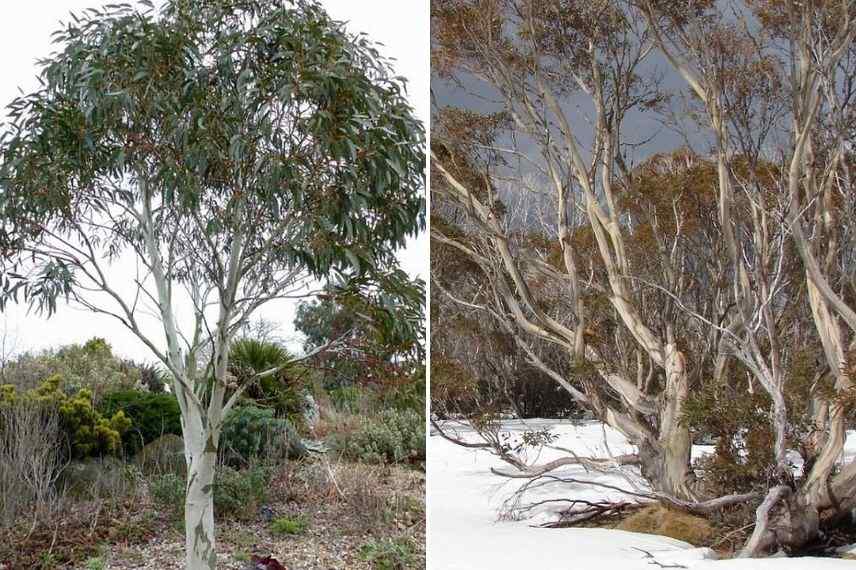 The Eucalyptus niphophila with snow-coloured bark
The Eucalyptus niphophila with snow-coloured bark
- Subscribe!
- Contents
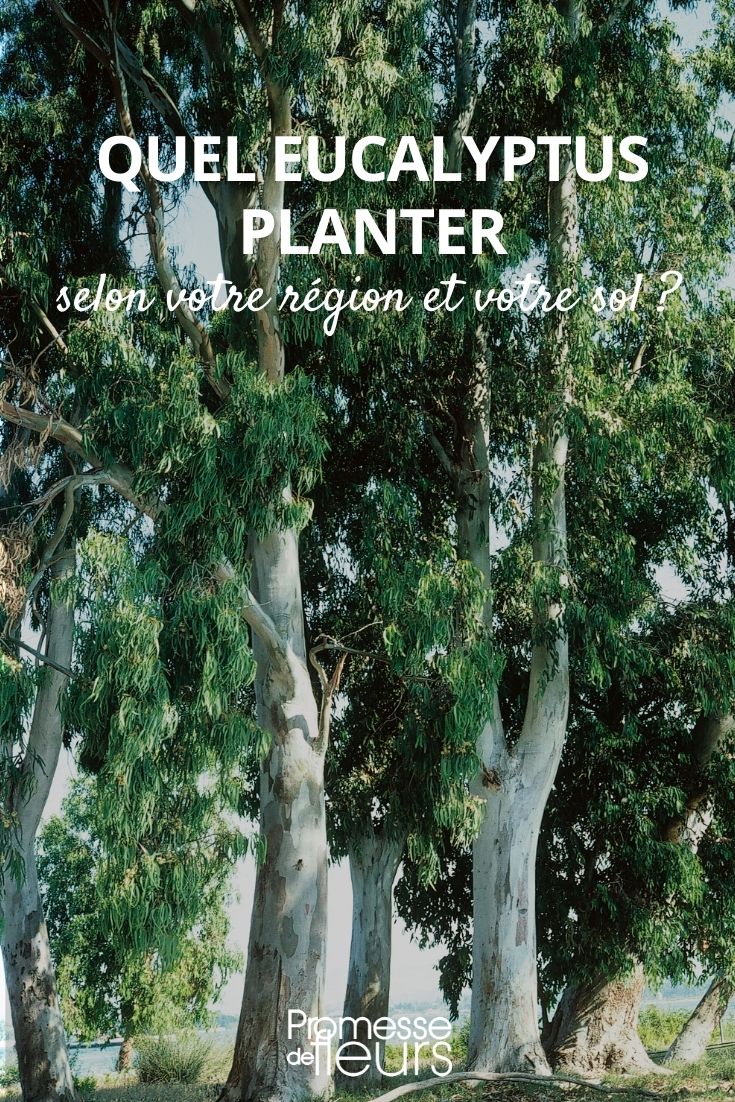
































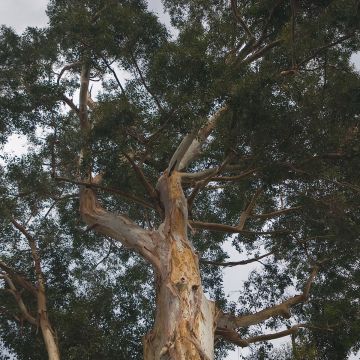
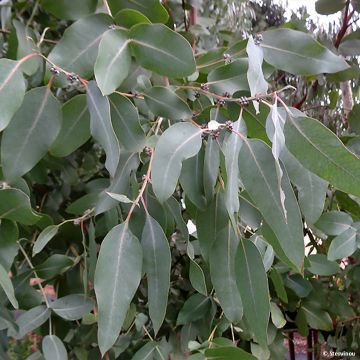
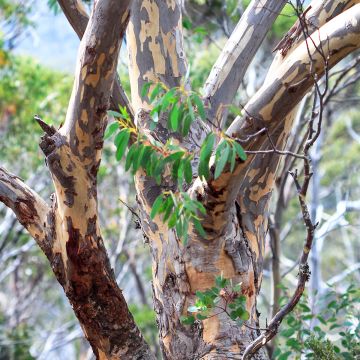
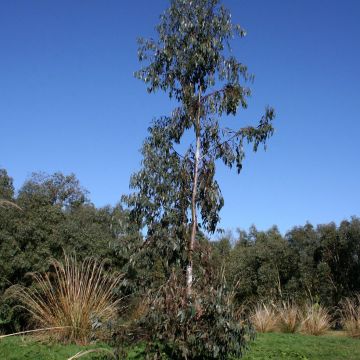
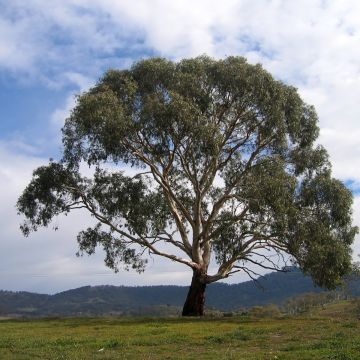
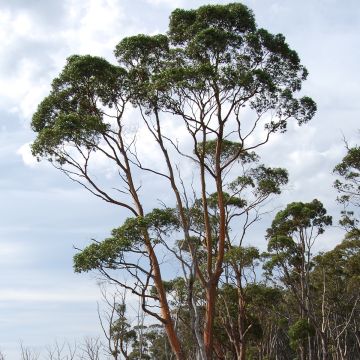
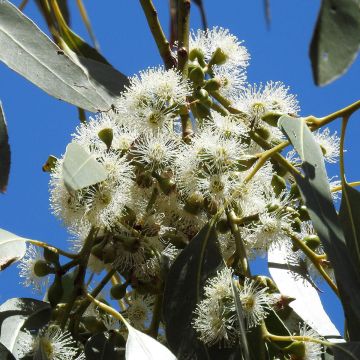

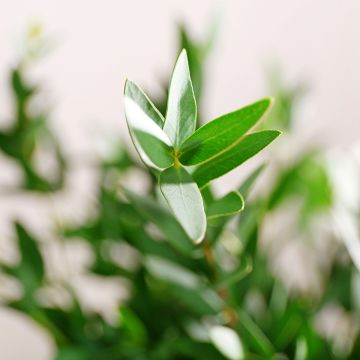
Comments